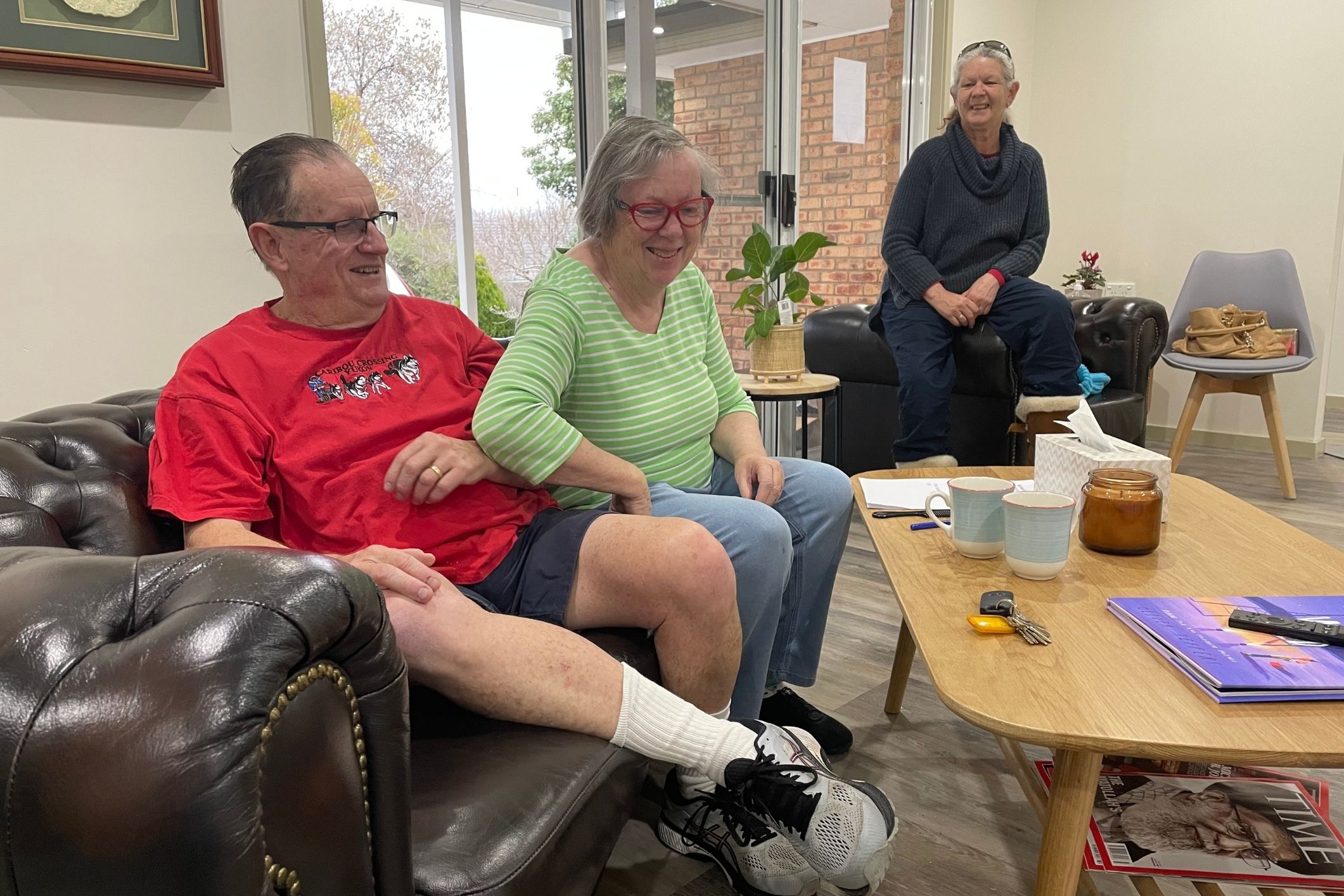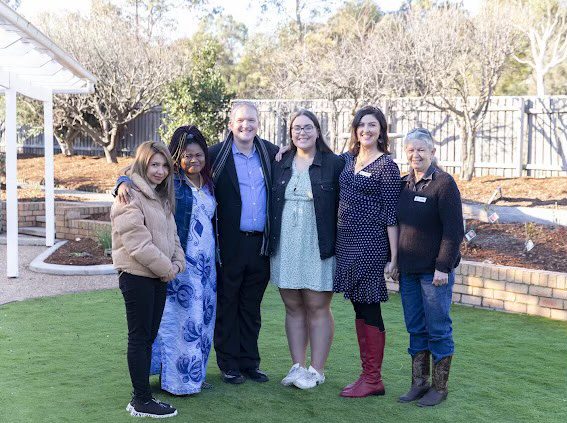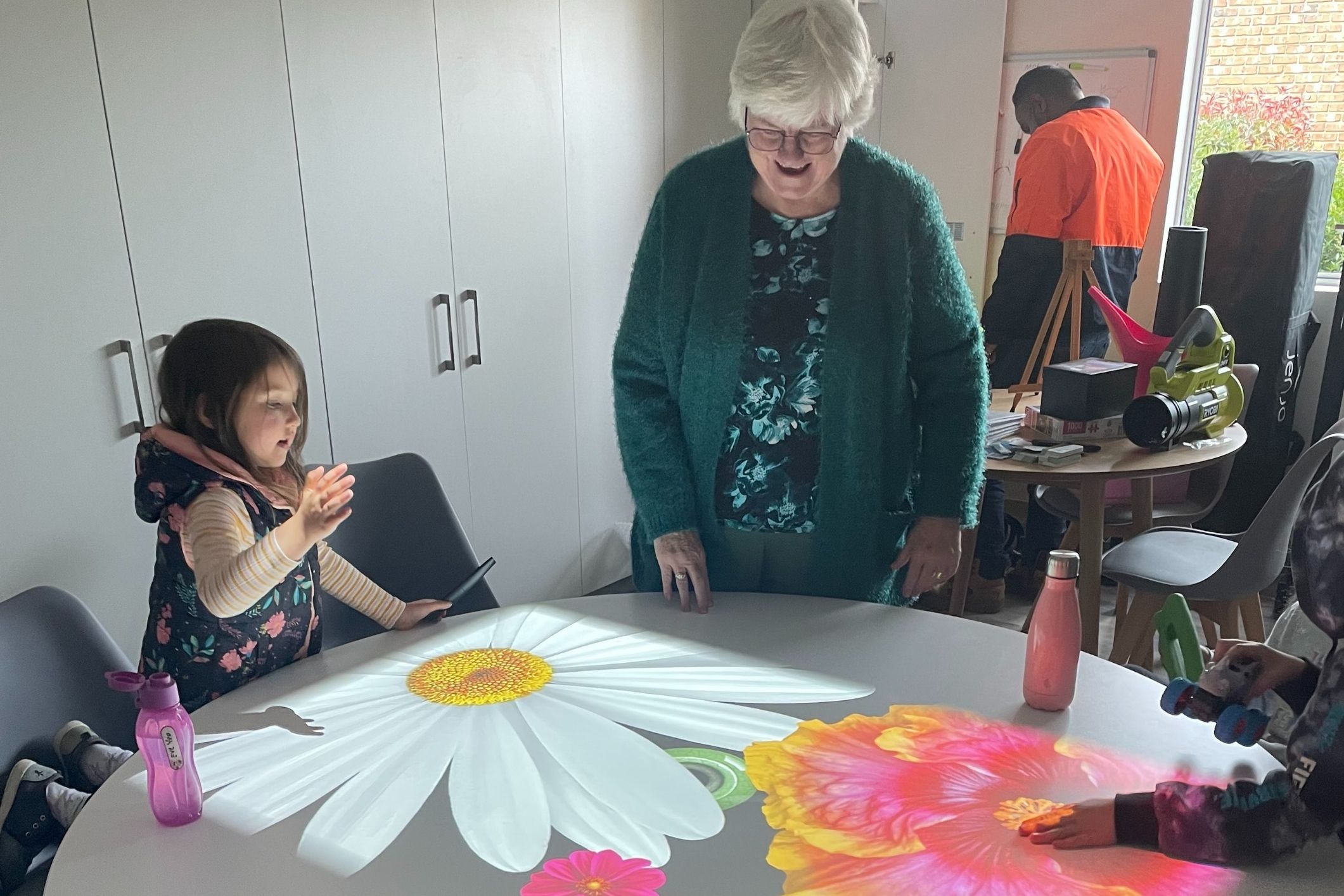
Operating as part of the broader community, as opposed to typical care settings which function as communities of their own, Kambera House’s small-scale, non-institutional setting blurs the lines between assisted living and around-the-clock clinical care.
While early-onset dementia is far less common than the typical late-onset form of the disease, the effects are particularly devastating.
With cases being diagnosed between the ages of 30 and 64, many of those diagnosed with early-onset dementia still have jobs, spouses, children and sometimes elderly parents of their own to help care for.
People living with early-onset dementia fall into National Disability Insurance Scheme (NDIS) funding, but unfortunately NDIS services are more catered to deal with physical disability rather than cognitive decline.
Although aged care services are better equipped to meet the needs of people living with dementia than standard NDIS disability housing, those with the early-onset form of the disease are generally more physically capable than the elderly population within aged care homes.
Kamberra House is the first facility of its kind in Australia.
It also stands as the culmination of a life’s work by two of the aged care industry’s most knowledgeable figures, who utilised decades worth of industry experience to bring their vision of what care should be, into a tangible reality.
The home is run by the not-for-profit organisation Community Home Australia, whose founder, Dr Rodney Jilek, is an aged care consultant with a background in nursing.
Meanwhile, the home’s manager, Nicole Smith, is a registered nurse and gerontologist who was known locally for running a Community Cafe for people living with dementia in Canberra.
“Our staff ratio is 1 to 3. It’s one staff member for every three residents around the clock, and we have a full-time nurse five days a week who remains on call at times,” said Dr Jilek.
“If you truly want to deliver care to meet the needs of individuals, you need to have enough staff to be flexible. You also need to ensure that you have staff who aren’t just there to receive a paycheque,” he added.
“Kambera House was built specifically for people living with early-onset dementia, so we had to make sure that we had everything in place to meet their specific needs.”

Kambera House’s unique approach to delivering care begins with its staff recruitment.
“Our staff members are called house companions, and we needed unique people to suit a unique environment,” said Smith.
“The way things are set up, It’s almost like servant leadership. Rodney and I serve our house companions with support and leadership so they can best serve and support our guests. As an RN, I am here five days a week, so if I am changing a pad, one of our house companions may be doing my HR for me or starting with lunch for us and the guests.”
Smith added, “Roles here are fluid, and just like any family we get our jobs done.”
Staff do not wear uniforms, but they do wear pyjamas at night to help promote sleep in the later hours. There are also no staff breaks, there is no staff room and no staff toilet. Staff also cook alongside residents and eat meals with them.
This family-like approach to delivering care also extends to outdoor activities, as the staffing ratios provide enough room for house companions to join residents on walks and do the shopping together.
While the benefit to residents is clear, staff also enjoy some extra benefits that are definitely out of the norm in care settings around the country.
“All of our staff are on above-award contracts,” explained Dr Jilek. “Every single one of them.”

The term Tovertafel translates to ‘Magic Table’ in English, a title that seems apt when you observe the looks of joy and astonishment on the faces of residents.
Bedrooms and bathrooms within Kambera House employ state-of-the-art signalling technology to detect falls. This tech gives staff the ability to identify the location of a guest in their room without the need for obtrusive cameras or door-knocking at night.
Beds within the home have all the functionality of modern hospital beds, without the drab institutional styling. All beds boast king single mattresses that automatically produce a dim nightlight when residents leave their beds to increase visibility and decrease the chances of a fall.
Google Nest technology is also a staple in all bedrooms, allowing voice activation for TV, music and lighting. Residents also have their own iPad, which is set up for easy access to video calls with family members and friends.
“If a resident can’t use it, we don’t use it,” revealed Ms Smith. “One of our guests likes all of her activities written on the back of her door, even though they are on her iPad. And we do it because she prefers it that way. Everything that we do here is about enabling choice.”
She added, “Things are very next level [in] here in terms of technology, but they will never replace personal understanding and interaction.”

Residents of Kambera House don’t require a bond of any kind. The home charges them a flat daily rate of only $32, with the rest of the costs being covered by their NDIS funding. According to Dr Jilek, this may also make the home affordable for people who may be on a full pension.
“We gauged our pricing by figuring out what we need to deliver the service that we provide, and if that happens to be significantly less than some others, then so be it,” said Dr Jilek.
“We’re not here to milk the system, we’re not in this to make an enormous profit, and we don’t have a big corporate office or marketing people that we have to pay. By doing things this way, we can afford to purchase things for our residents that they would normally be paying for in other settings.”
Dr Jikel continued, “If a resident decides that they want takeout food instead of their dinner, we pay for it. If a resident decides that they want to see a movie, we pay for it. One of our guests couldn’t believe that she didn’t have to pay for her own strawberries.”
Despite no paid advertising, Kambera House has been inundated with applications from prospective residents. The level of demand has been so high that Community Home Australia is now looking to expand into additional homes in local communities.
“Our new residents come into our home, they are fed food made by our residents, and they sit down over a meal and talk to our existing residents about what living here is really like,” said Ms Smith.
If the residents and staff are anything to go by, Kambera House is clearly doing something right. Just don’t ask Dr Rodney Jilek to come up with a name for the type of care that they provide.
“It’s called life,” explained Dr Jilek. “An opportunity for people to continue living their lives as they did before, with as much support as they need to do that. That’s what we call this model of care.”
He added, “There is no fake barbershop or cinema room here. We take you to your barber and we take you out to the cinemas. We live in the community so that we can be a part of it.”
This approach has given me hope, I just love it. Thank you
Love the idea of staff in their PJ’s in the evening to promote normality.
Great fresh new way to ensure people don’t feel they have given up who they are in supported living.
How good is this place ! It is so much needed ..Hopefully it will be a great success .
And may many Canberra residents be able to enjoy .